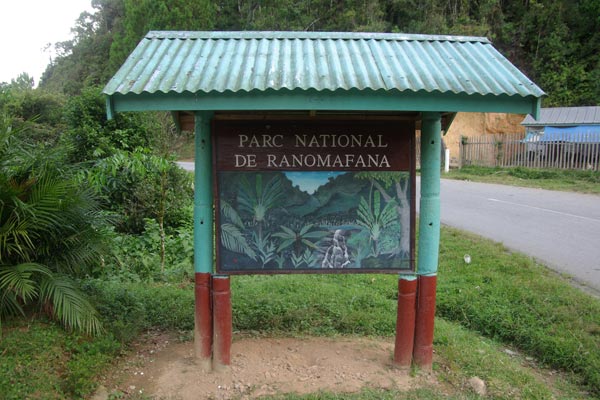
Ranomafana is a wet place. Twenty-nine rivers originate from within the park. The hiking trails from the visitors center start by crossing a bridge over this river:
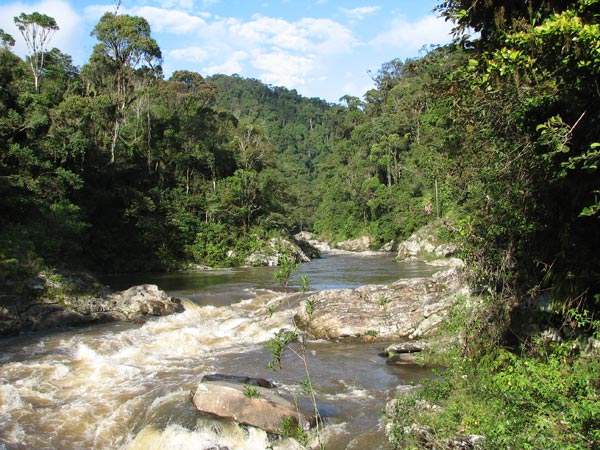
And that brings us to the lizards. Here's the first skink I saw in Madagascar. It was basking on some exposed rocks at the side of the river pictured above.
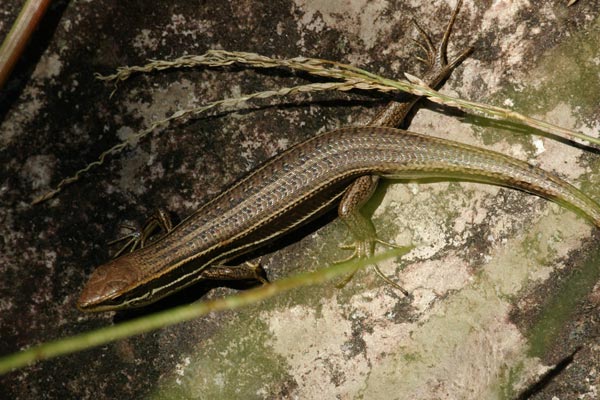
In Ranomafana we saw none of the Zonosaurus madagascariensis lizards that had been so common in Andasibe and Anjaha. However, we did see one individual of this more colorful Zonosaurus. This one had apparently just eaten a grasshopper for an appetizer (that's a grasshopper leg hanging out of its mouth), and was in the process of thrashing a Phelsuma gecko around for the main course when we noticed it.
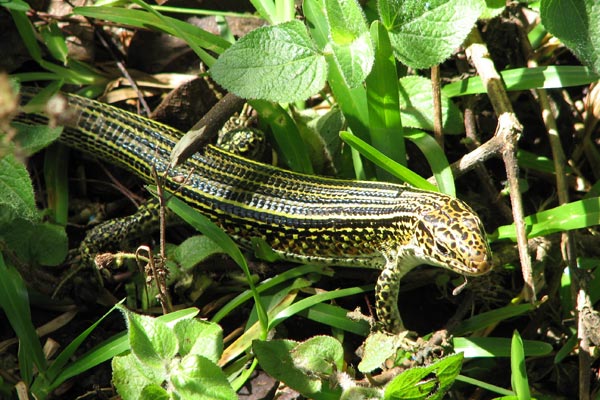
This tiny tail-less Phelsuma was just outside our room at the Setam Lodge where we stayed. The white belly and lack of big red patch on the back identify the subspecies as lineata rather than the bifasciata that we had seen in large numbers at Andasibe. This turned out to be the only P. l. lineata we saw at Ranomafana.
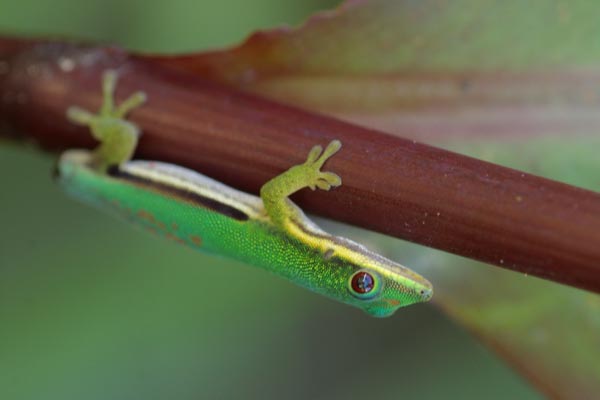
At Andasibe P. lineata was common and P. quadriocellata was rare. Here we experienced the opposite.
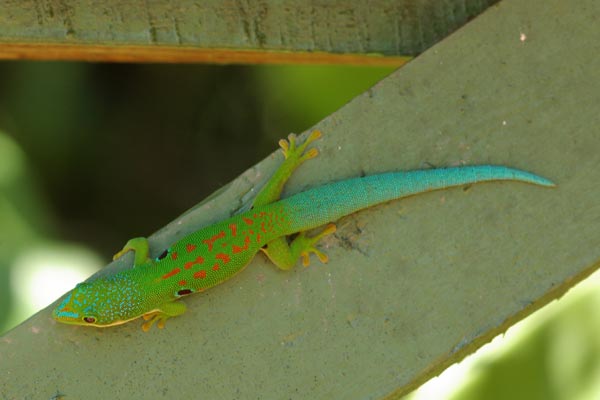
The best geckos we saw at Ranomafana were without a doubt the amazing Uroplatus phantasticus leaf-tailed geckos. We saw one by day and three by night. I didn't get any photos of one of the night-time adults because it was high up in the trees, but here are the other three. (To appease Phrynophan I posted different photos of these three lizards in a separate topic earlier.) The second one pictured here was very small, just a couple of inches long. The other two were adults.
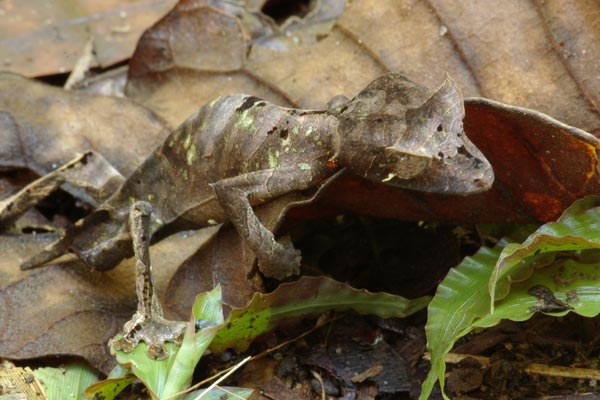
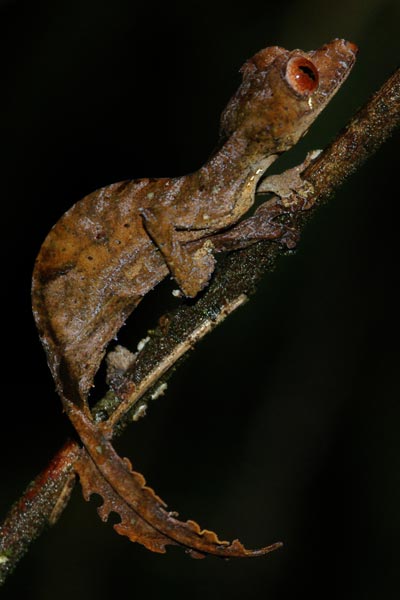
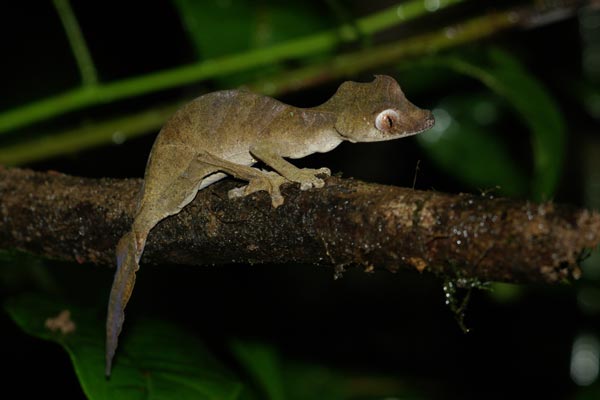
Most of the chameleons we discovered at Ranomafana were seen at night. Here are three representatives.
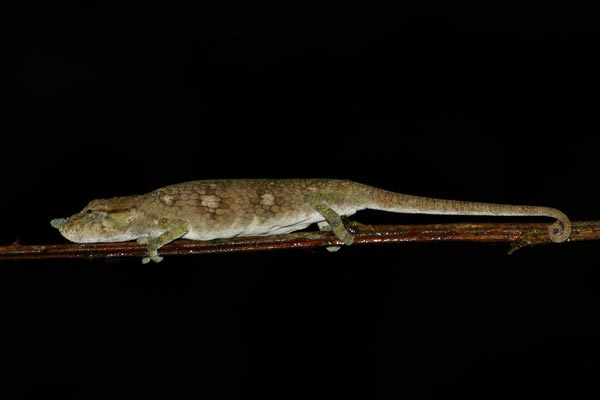
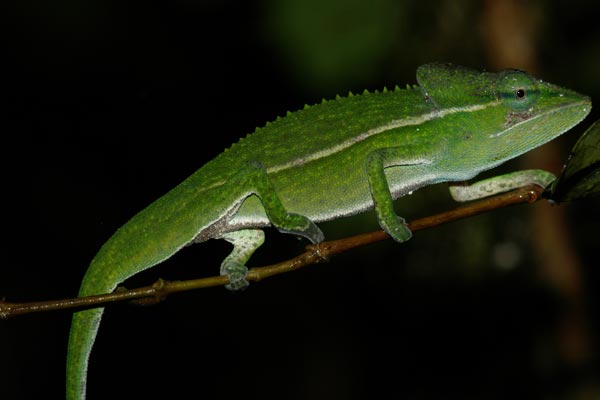
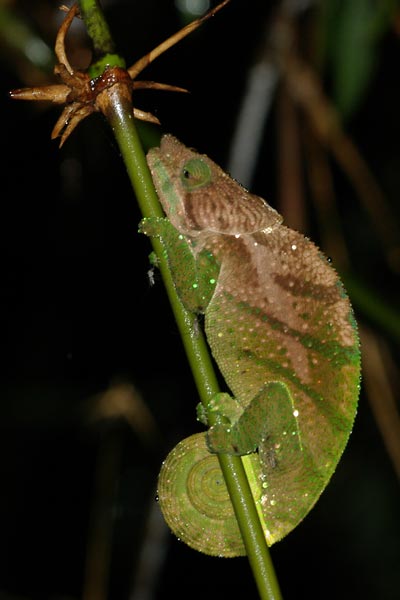
Our first Ranomafana Brookesia was this guy, barely noticeable among some sagging brown leaves about four feet off the ground. We are still wondering how our forest guide noticed it.
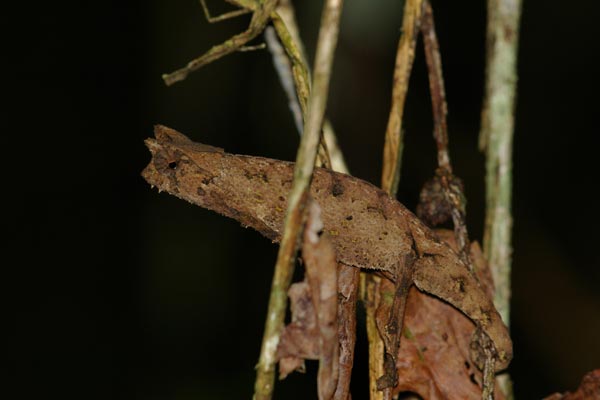
Our guide later found another of the same species on the forest floor:
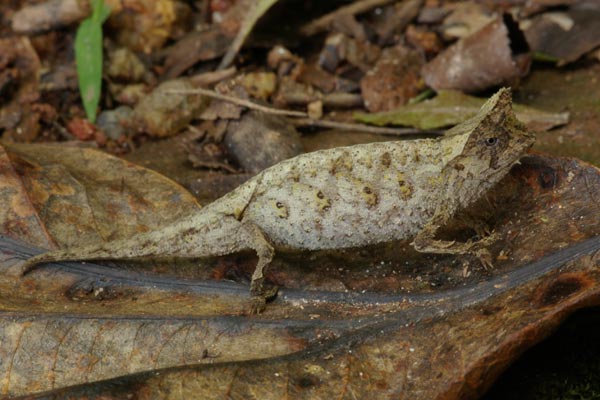
That's it for the Ranomafana lizards. To introduce the snakes, here's a shot of Setam Lodge, where we stayed. As you can see it's in a thin cleared patch between the forest and the road.
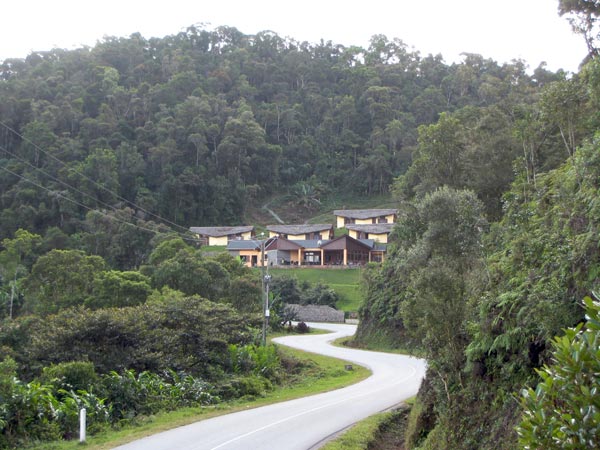
After lunch at the lodge, we walked up the side of the road a short distance to admire the view. On the way back, my sister noticed this small snake just next to the steps up to our rooms. It sat perfectly still for a short while, then suddenly started thrashing wildly and quickly disappeared into a culvert under the path. My first thought was "hey, it's a Madagascar Tantilla!"
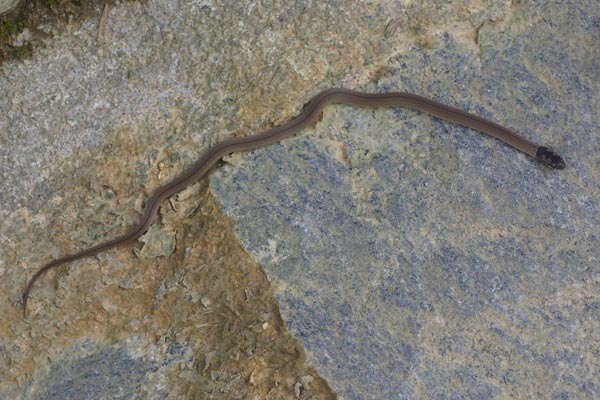
That same day after lunch we returned to the park visitors center where our forest guide was waiting for us with this snake in hand, which he had come across a few minutes earlier. I settled the snake down for some photos. We had seen some Liopholidophis in Andasibe and Anjaha, but this one was a new species for us.
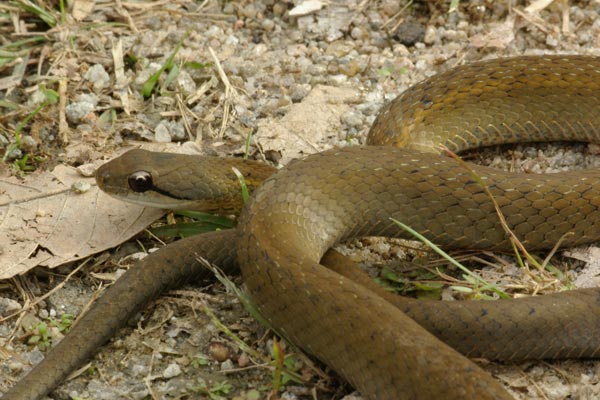
An hour or so later our guide noticed a small snake crossing the path. It was in a hurry to reach the dense leaf litter at the edge of the path, so I pounced. It turned out to be another Liophidium species. This one was the same small size as the one we had seen by the lodge, but had very different coloration, including a pink belly.
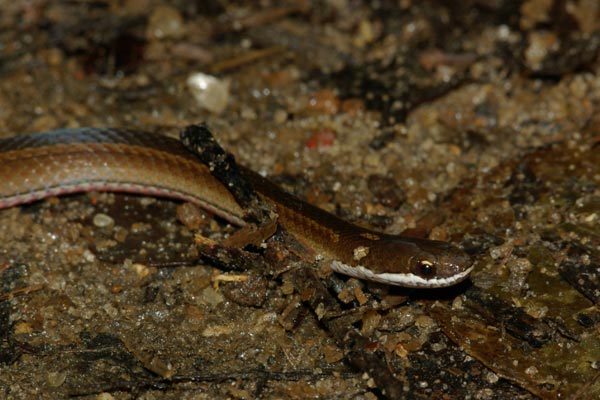
As I mentioned before, Ranomafana is very wet. Here's one of the numerous small waterfalls we saw while hiking about.
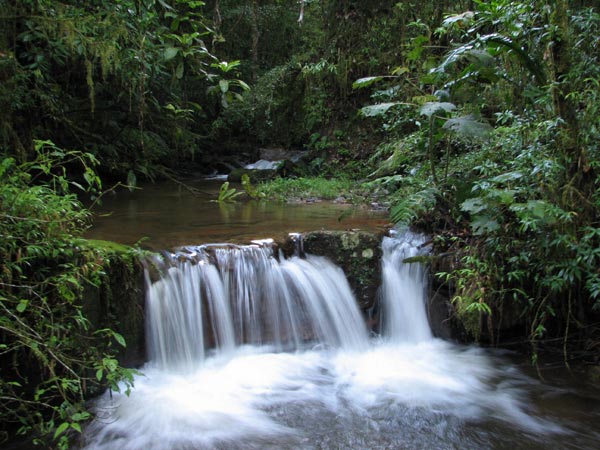
All that water means that Ranomafana is full of frogs. Lots of frogs. Our guide said that 106 species of frogs had been recorded in this one park, with new species being described nearly every year. Yow! We saw "only" a dozen or so species. Apparently if we had come in the wet season we would have seen many more species (but it would have been much more difficult to get photos). I'll kick off the frog photos with the one species we had seen at Anjaha, which we later learned was the most widespread and common species in Madagascar.
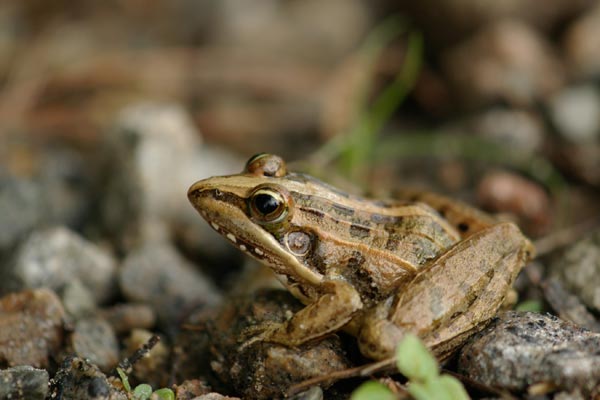
Boophis is a widespread genus of Madagascar treefrogs. Surprisingly, we saw only this one Boophis frog in Ranomafana.
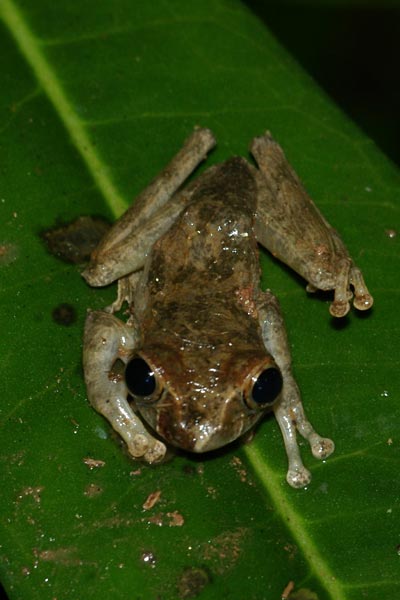
Plethodontohyla notosticta is an oddly angular little fellow.
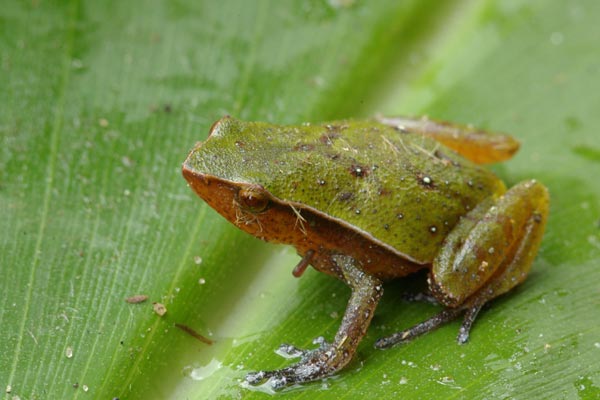
Aglyptodactylus madagascariensis is a large jumpy Rana-type frog.
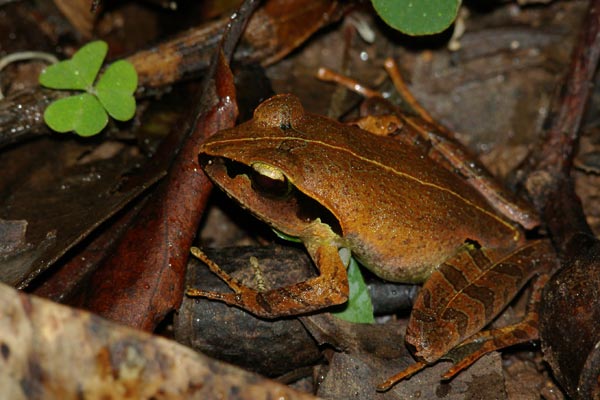
Here's one I'm not very sure about. The best match I could find in Glaw & Vences was Aglyptodactylus madagascariensis, the same as the previous photo. But there's no mention in G&V of the white speckling or of this particular color pattern.
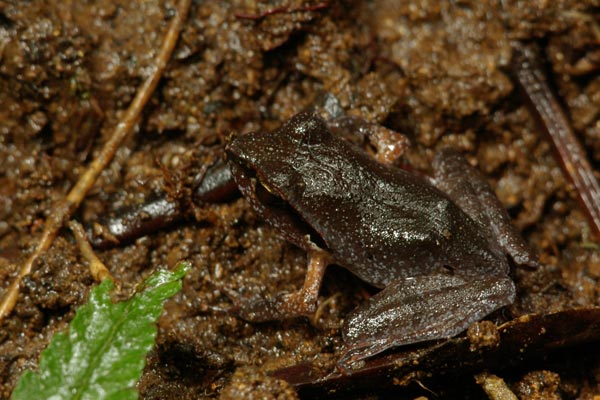
Mantidactylus blommersae is a small long-snouted frog.
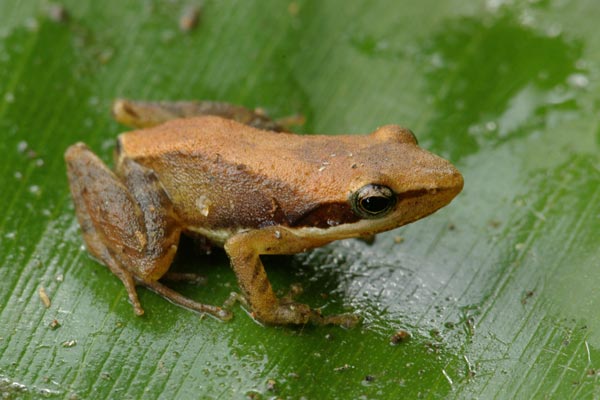
Mantidactylus betsileanus is reminiscent of Ptychadena mascareniensis but is somewhat stouter and has a less Leopard-frog-like appearance.
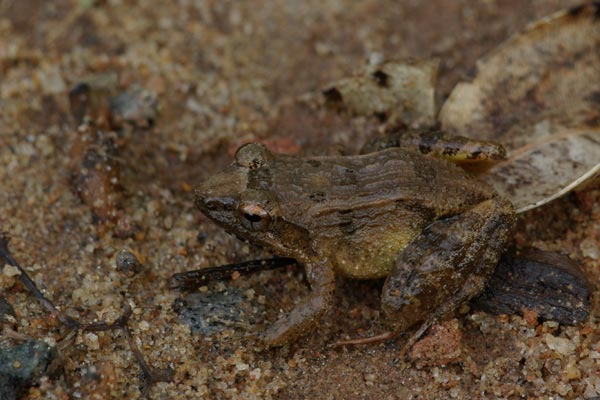
Mantidactylus pulcher is a beautiful little green frog that spends its whole life Pandanus plants.
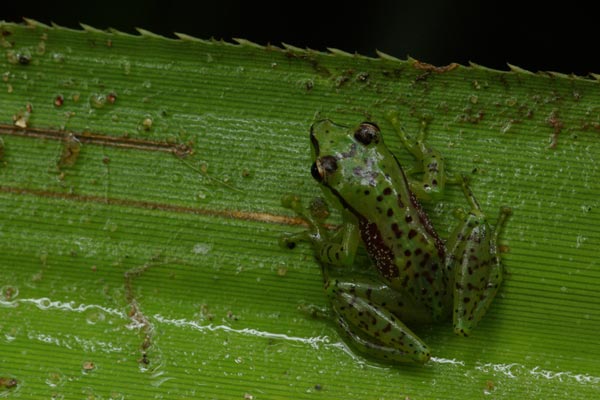
Here's another mysterious frog. This one was miniscule, no more than half an inch SVL. My best current guess is that this is a tiny baby Mantidactylus pulcher, but I'm not very confident about that.
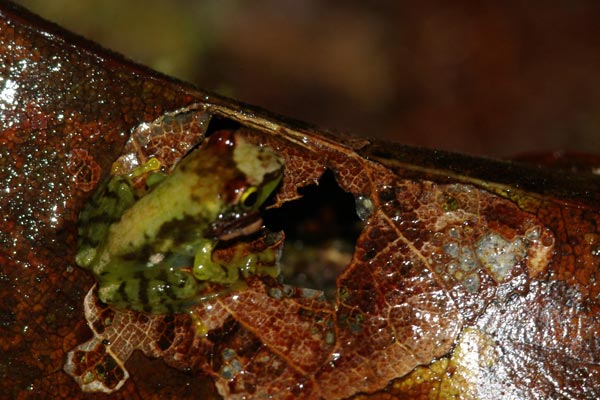
This next frog was found in a Pandanus plant that also housed some green M. pulcher. Our guide identified it as a male M. pulcher. However, I can't find any other mention of either gender of M. pulcher being anything other than green. Also, the front legs look significantly longer, and the skin looks more granular. I think this is really Mantidactylus liber. Maybe you know better?
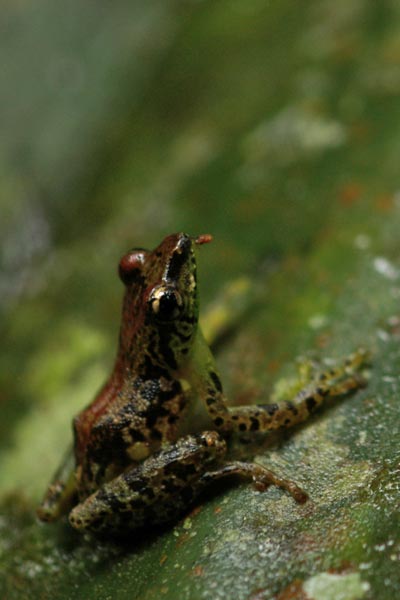
At one point our guide left the trail, headed down to the nearest stream, and started walking through it. A moment later he had captured this frog, which he brought up to the trail for photos.
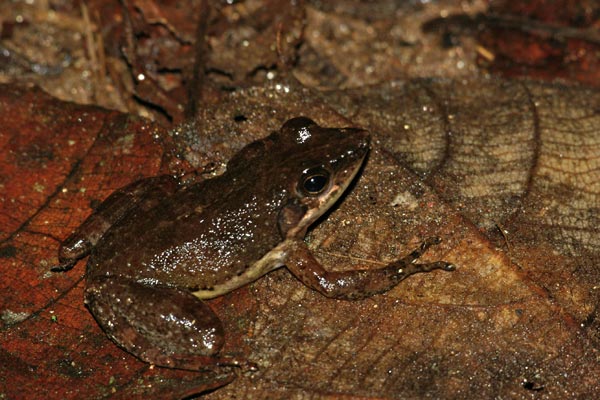
As I mentioned in part 1 of this saga, the large genus Mantidactylus has been divided into a number of separate genera in the years since 1994 when the 2nd edition of Glaw & Vences was published. I'm going to keep using the Mantidactylus name until the 3rd edition comes out and clarifies things. Here's another member of this super-genus with quite a different body style from the ones pictured above. As far as I could tell from G&V, both of the next two frogs are the same species, though they look different enough that it wouldn't surprise me if they turn out to be separate but closely related species.
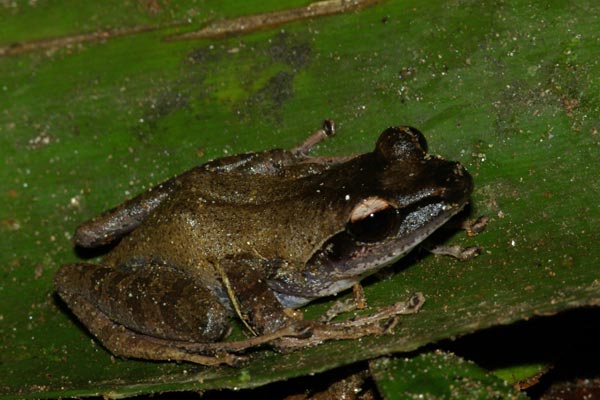
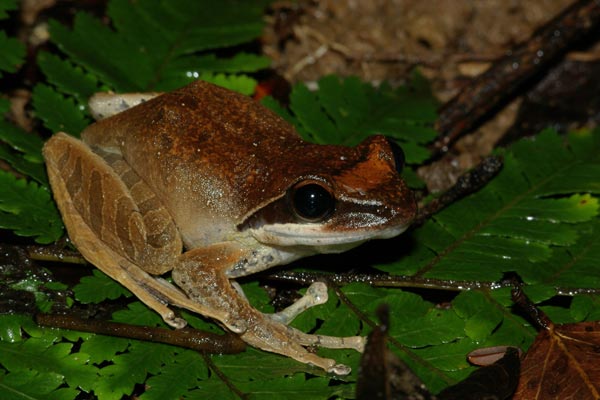
Mantidactylus asper is a funny little flat Mantidactylus, obviously a great jumper given those back legs.
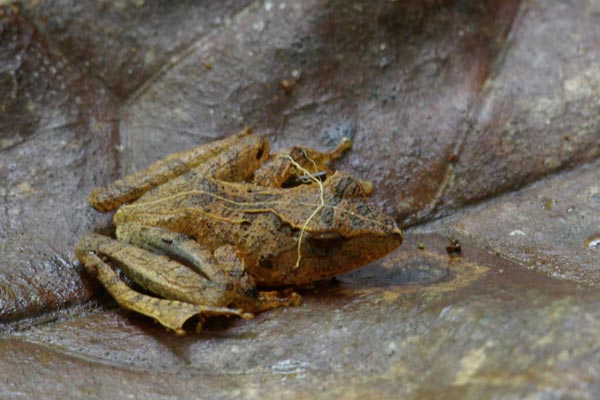
Mantidactylus opiparis has yet another different body style. I can see why they broke this genus up.
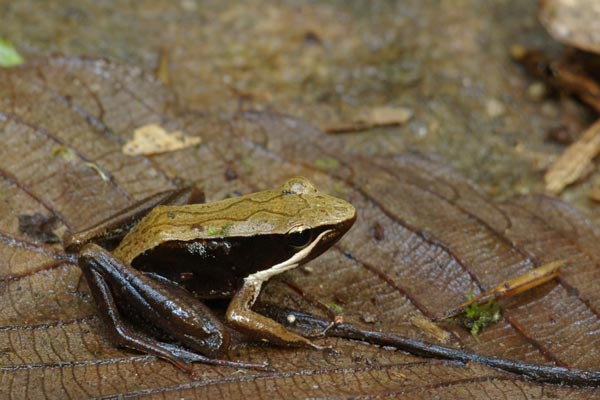
Finally, here's a large strapping frog that I tentatively identified as Mantidactylus luteus.
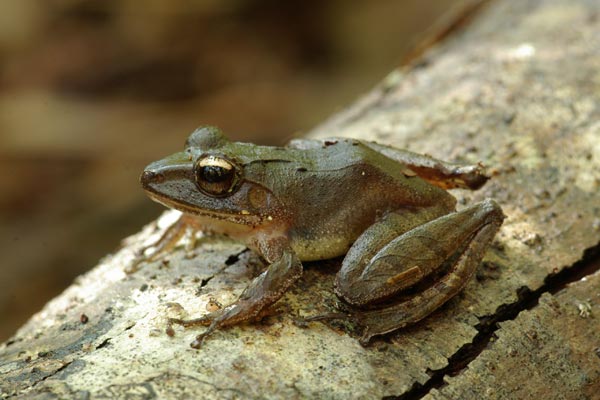
Since Ranomafana was founded primarily due to a mammal, it only seems fair to include a few mammal photos here.
For reasons we didn't quite ascertain, the Fossa here had been regularly fed by researchers, leaving it willing to hang out near a bunch of tourists with cameras. Fossas are nocturnal, and do not naturally have space-alien glowing white eyes.
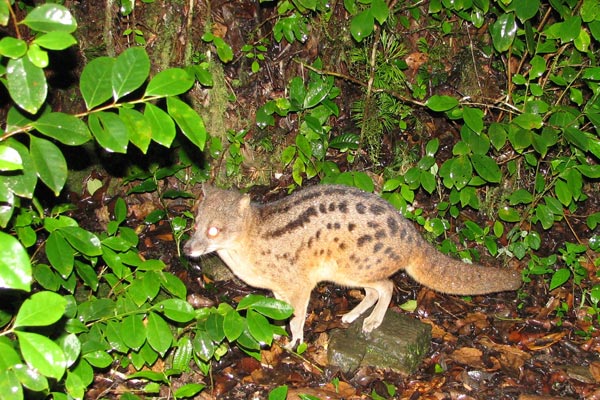
Brown mouse lemurs were common, and cute, and also not very shy due to earlier feedings by researchers.
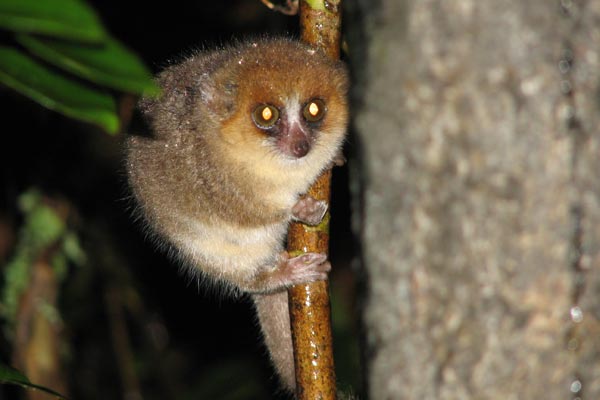
Some diurnal lemurs:
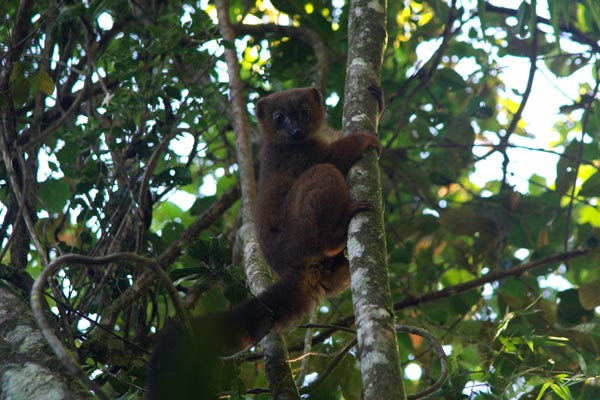
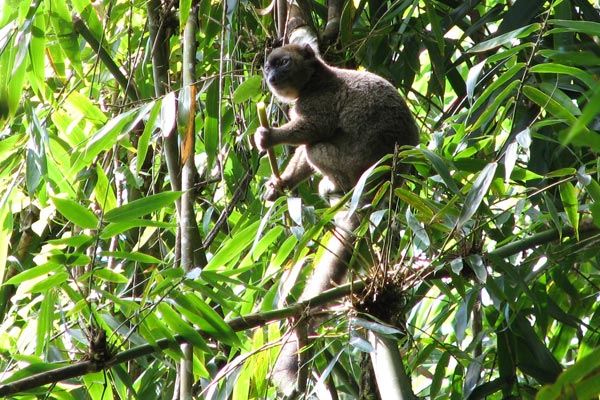
And last but not least, the species whose discovery led to the founding of Ranomafana National Park. Note that this one is wearing a radio collar.
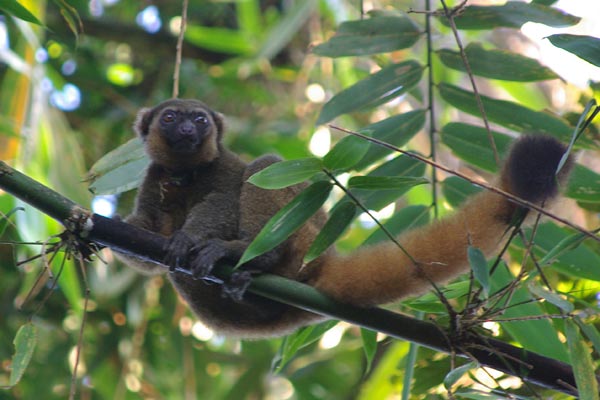
Next: Masoala